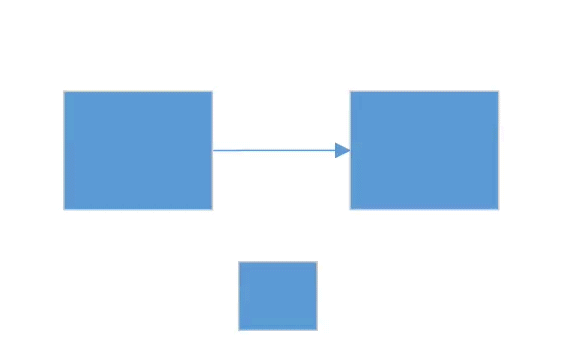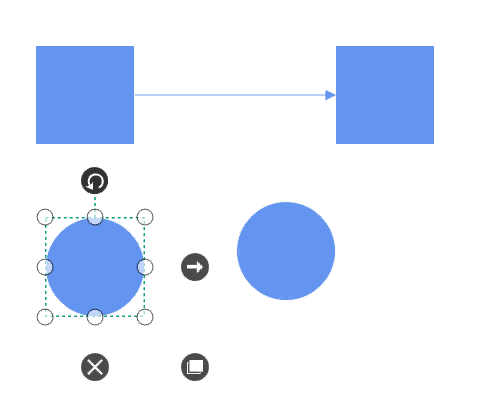Collision State in WPF Diagram (SfDiagram)
16 Dec 20247 minutes to read
SfDiagram provide supports to arrange the nodes and connectors neatly by adjusting node’s position. For example, on a diagram with full of nodes and connectors, you want to place a node without intersecting any other elements.
Using CollisionState and GetCollisionFreeLocation method, you can able to find a possible position without intersecting others for any given node.
// Invoking SelectorChanged Event
(this.diagram.Info as IGraphInfo).SelectorChangedEvent += OnSelectorChangedEvent;
// SelectorChanged event - custom code
private void OnSelectorChangedEvent(object sender, SelectorChangedEventArgs args)
{
// Need to adjust selected node's position, if it in contact with any other elements on drag complete
if (args.Item is SelectorViewModel && args.NewValue.InteractionState == NodeChangedInteractionState.Dragged)
{
var selectorViewModel = (SelectorViewModel)args.Item;
if (selectorViewModel.Nodes is IEnumerable<object>)
{
var selectedNodes = ((IEnumerable<object>)selectorViewModel.Nodes).ToList();
if (selectedNodes.Count == 1 && selectedNodes[0] is NodeViewModel)
{
var selectedNode = (NodeViewModel)selectedNodes[0];
var collisionState = new CollisionState() { Item = selectedNode };
((IGraphInfo)this.diagram.Info).GetCollisionFreeLocation(collisionState);
// Re-arranging node's position
selectedNode.OffsetX = collisionState.Offset.X;
selectedNode.OffsetY = collisionState.Offset.Y;
}
}
}
}
In some cases, there may be requirement for repositioning overlapping objects, rather than selected object. Using GetOverlappingObjects method, you can able to find all overlapping objects(such as Node or Connector or Annotation) for a given node.
private void OnSelectorChangedEvent(object sender, SelectorChangedEventArgs args)
{
if (args.Item is SelectorViewModel && args.NewValue.InteractionState == NodeChangedInteractionState.Dragged)
{
var selectorViewModel = (SelectorViewModel)args.Item;
if (selectorViewModel.Nodes is IEnumerable<object>)
{
var selectedNodes = ((IEnumerable<object>)selectorViewModel.Nodes).ToList();
if (selectedNodes.Count == 1 && selectedNodes[0] is NodeViewModel)
{
var selectedNode = (NodeViewModel)selectedNodes[0];
var collisionState = new CollisionState() { Item = selectedNode };
// Finding overlapping nodes & connectors for the selected node.
var intercepts = ((IGraphInfo)this.diagram.Info).GetOverlappingObjects(collisionState);
foreach (var intercept in intercepts)
{
if (intercept is NodeViewModel)
{
var intersectingNode = (NodeViewModel)intercept;
var collisionState1 = new CollisionState() { Item = intersectingNode };
((IGraphInfo)this.diagram.Info).GetCollisionFreeLocation(collisionState1);
// Re-arranging node's position
intersectingNode.OffsetX = collisionState1.Offset.X;
intersectingNode.OffsetY = collisionState1.Offset.Y;
}
}
}
}
}
}
Spacing
The Space property of CollisionState allows you to change the spacing distance.
var selectedNode = (NodeViewModel)selectedNodes[0];
var collisionState = new CollisionState() { Item = selectedNode, Space = 5 };
((IGraphInfo)this.diagram.Info).GetCollisionFreeLocation(collisionState);Ignore objects as an overlap
By default, annotation’s of other elements were also considered as an intercepts for any given node. This can be disabled with the help of IncludeSubElements property of CollisionState.
var selectedNode = (NodeViewModel)selectedNodes[0];
var collisionState = new CollisionState() { Item = selectedNode, IncludeSubElements = false };
((IGraphInfo)this.diagram.Info).GetCollisionFreeLocation(collisionState);In addition to this,IgnoreList property of CollisionState allows you to restrict specific elements as not an intercepts. For example, you can ignore aligning nodes if same shaped node were collided.
